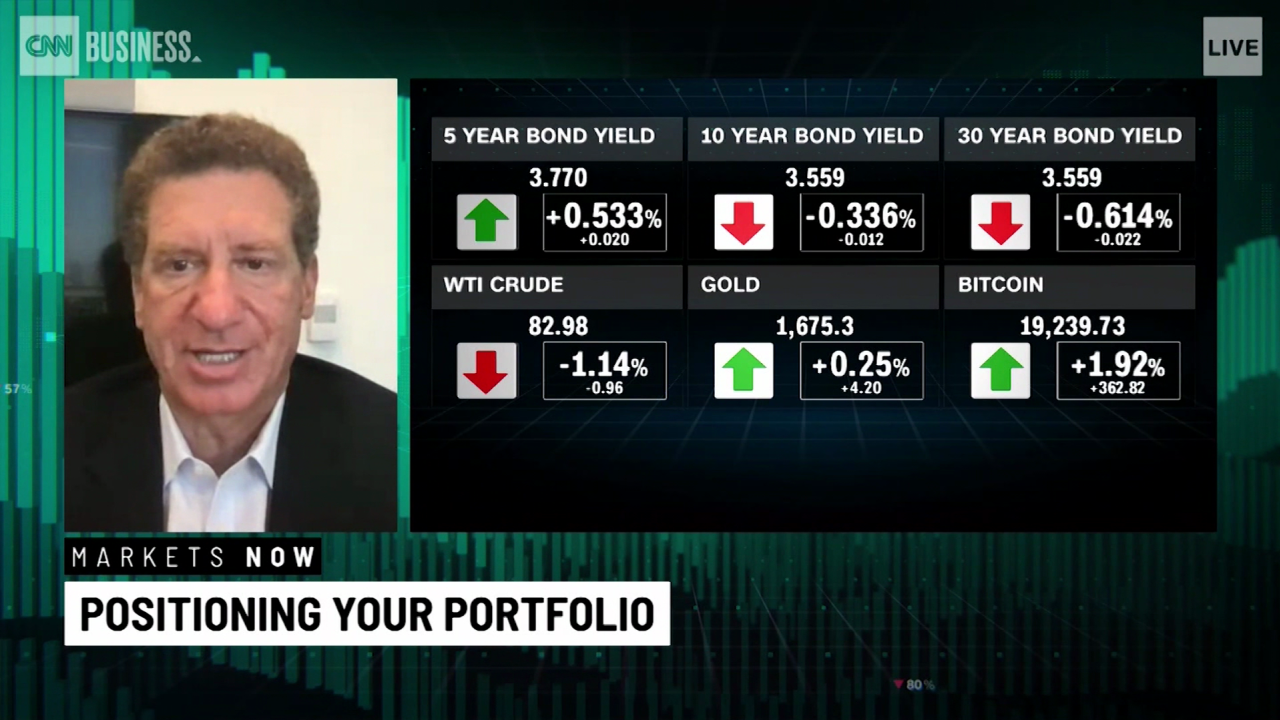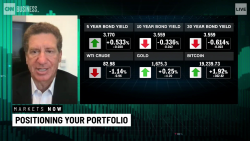A version of this story first appeared in CNN Business’ Before the Bell newsletter. Not a subscriber? You can sign up right here. You can listen to an audio version of the newsletter by clicking the same link.
It’s been a rollercoaster year for stocks. The S&P 500 is down more than 20% year-to-date and 2022 is likely to end up as the sixth-most volatile year since the Great Depression.
But not all traders are on the same ride — the large, institutional investors on Wall Street have shuffled away from markets while Main Street’s retail investors are still strapped in.
What’s happening: It hasn’t been a great year for investors — global equity markets are contending with sky-high inflation, elevated interest rates and slowing economic growth. But despite this year’s lackluster market, investors bought $800 billion of Exchange Traded Funds which are baskets of stocks typically purchased by retail investors. That’s the second most on record, according to Bank of America’s Jared Woodard.
Hedge funds and other institutional investors, meanwhile, have been heading for the exits and selling their stocks — preferring to hold on to cash instead. Goldman Sachs reports that funds increased their cash holdings to around 2.5% of their total portfolios this fall. That’s a full percentage point higher than where it was at the end of last year and the highest level since the beginning of 2020.
At the end of November, institutional investors’ portfolios were about $375 billion lighter in equities than they were at the end of 2021, according to data from S&P Global Market Intelligence. Retail investors, meanwhile, acquired $4.3 billion more in equities over the same period.
The S&P 500 is heading toward its worst year in a decade. However, Main Street is holding on to its stocks while Wall Street is running for the hills.
What explains the divergence? It depends on who you ask.
One simple explanation is that institutional investors are responsible for vast amounts of money that belong to other people. They have to answer to a board and they’re generally more risk-averse than individual investors who only have to answer to themselves. When markets move downward, it’s usually institutions who that move quickly out of equities while retail investors prefer to play the long game.
But those working in finance may tell another story. “Respect, for retail investors, is in short supply,” wrote Azalea Micottis at Informa Financial Intelligence, in a recent note. “For many finance professionals, they are the fools in the market, rushing lemming-like into meme stocks and assets coming off their peaks.”
That could be the case here, but an analysis by Micottis found that retail investors have actually done a better job at predicting the future direction of markets than institutional investors have since 2016.
Still, things aren’t looking great this year.
The average active retail investor’s portfolio is down around 30%, or $350 billion in total value, according to data compiled by Vanda Research. That’s a lot worse than the S&P 500. Tesla’s downfall wiped out about $78 billion for retail traders alone, according to Vanda. JPMorgan analysts predict things will only get worse. They say retail investors will likely end the year down 38%.
Europe agrees to cap gas prices
It’s been a long time coming. After months of debate, Europe has agreed to a cap on natural gas prices, report my colleagues Hanna Ziady and Anna Cooban.
Officials across Europe disagreed over whether the controversial measure would protect European households and businesses from extreme price spikes as temperatures plummet but on Monday they reached a deal.
EU energy ministers agreed to trigger a cap on the price of month-ahead natural gas futures on the Dutch Title Transfer Facility (TTF) — the bloc’s benchmark gas exchange — to €180 ($191) per megawatt hour if it exceeds this level for more than three consecutive working days.
The cap will also apply to three-month and year-ahead gas trades, and it will remain active for at least 20 working days once triggered. It is planned to come into force as of February 15 of next year.
The cap is the latest in a raft of measures agreed by the European Union this year to stem an energy crisis sparked by Russia’s invasion of Ukraine that has pushed up prices and fueled the highest inflation in decades.
Gas prices spiked to a record high of around €345 ($367) per megawatt hour in August, after Moscow reduced gas deliveries to the continent. TTF gas futures fell back 5% on Monday to hit €107 ($114) per megawatt hour.
Concerns remain: Despite Monday’s political agreement, analysts and traders remain concerned that the mechanism could backfire –— causing prices to rise and worsening potential supply shocks.
Germany, the bloc’s biggest economy and one of its largest importers of natural gas, had been the most notable holdout before Monday’s announcement.
“Gas traders would likely liquidate short positions and stop selling futures if they fear the break could be activated imminently, for fear of the resulting losses,” analysts at Eurasia Group said in a Monday note.
Here’s who Elon Musk could pick to be Twitter’s next CEO
It’s been a wild month for Elon Musk and Twitter.
Facing criticism over his leadership methods at Twitter, including recent decisions to suspend journalists and introduce (and then delete) a controversial policy banning linking out to rival platforms, Musk posted a poll this weekend asking whether he should step down as CEO. If voters wanted his to leave his post, he said, he would.
The poll ended Monday morning with 57% of voters in favor of Musk handing off the top job.
Musk has not commented on the results of the poll. In fact, Musk went an uncharacteristically long time on Monday without tweeting at all, reports my colleague Clare Duffy. He did, however, say in a tweet Sunday before the poll had closed: “No one wants the job who can actually keep Twitter alive. There is no successor.”
But if Musk were to look for a new Twitter CEO, he’d likely have many willing takers.
Many have already stepped up to the plate and offered to take over. Those names include former T-Mobile CEO John Legere, MIT artificial intelligence researcher Lex Fridman and rapper Snoop Dogg (who could perhaps run Twitter with the help of his friend and entertainment personality Martha Stewart). Tom Anderson, a founder of MySpace, also commented on Musk’s poll about stepping down from CEO, saying, “depends on who you get to run it,” with a thinking-face emoji.
The most obvious potential candidates for a new Twitter CEO, writes Clare, are the Musk lieutenants who have been helping to run the company since his takeover. The short list likely includes investor Jason Calacanis, Craft Ventures partner David Sacks and Sriram Krishnan, an Andreessen Horowitz general partner focused on crypto and Twitter’s former consumer teams lead.

























